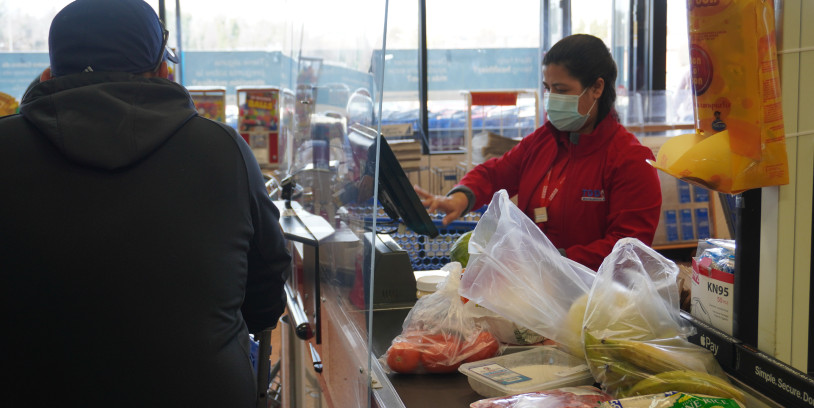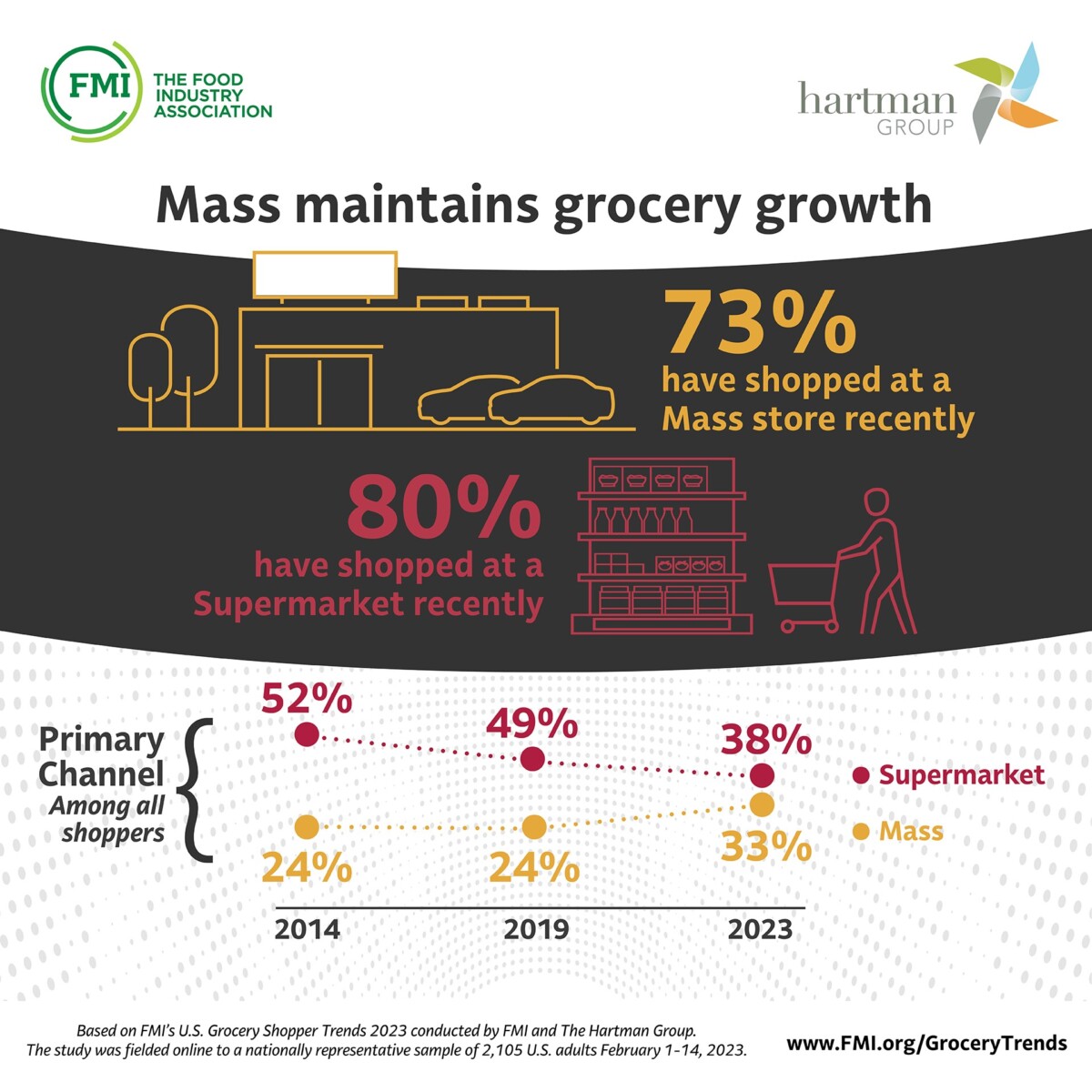A survey of grocery shoppers’ spending habits and attitudes by FMI – The Food Industry Association, conducted by The Hartman Group, reveals that while U.S. shoppers remain concerned about rising food prices, consumers are less likely to cut back on the number of items they purchase.
Among shoppers concerned about rising food prices, only 32% of shoppers in February reported buying fewer items as a strategy to address rising costs, down from 41% in October.
Instead, shoppers continue to look for deals across multiple channels – supermarkets, mass retailers, club stores, and online – to mitigate the impact of higher food prices on their budgets.
“Our national survey reveals persistent consumer concern about food and beverage prices, as the weekly spend for groceries increased in late 2022 and early in 2023,” said Leslie G. Sarasin, president and CEO of FMI.
Related Article: Hispanic Consumer Preferences Open Doors to the Future of Commerce
“To address higher prices, shoppers are visiting more stores and seeking deals to stretch their dollars but are now less likely to cut back on the number of items purchased compared to six months or a year ago. This is an opportunity for our industry to continue connecting with shoppers on food-inflation-mitigating solutions”, Sarasin added.
Food price concerns cut across shopper demographics, but Boomers are more worried about rising food prices than any other group, with 80% showing concern in February 2023 versus 69% in October 2022.
Millennials polled close behind, with 76% saying they are concerned, 5% more than one year ago. Such concerns about food costs coincide with increased spending in this inflationary environment.
On average, consumers spent $164 per week on groceries in February, up from $148 in October and February of 2022.
FMI’s U.S. Grocery Shopper Trends survey also revealed:
- 68% of shoppers report spending more on groceries than one year ago; 7% say they pay less.
- Households with children reported the most significant increase in grocery spending year over year.
- 55% of those polled are concerned with rising restaurant prices, up from 50% in October.
Overall, shoppers report fewer channels – consumer food industry channels include retail supermarkets, club stores, mass retailers, and online shopping – but more stores are in their rotation, suggesting increased competition for shoppers’ dollars within channels.
- In February, shoppers visited, on average, 5.2 different stores, up from 4.9 in February 2022. Meanwhile, shoppers used 3.6 other channels per month, down from 4.0 in February 2022.
- Internet shoppers have reduced the number of channels they shop online; while supermarkets and club channels have lost some of their online users, mass retailers have not.



